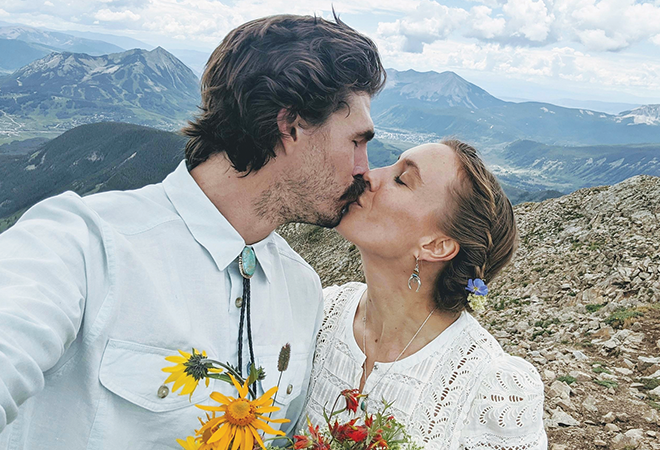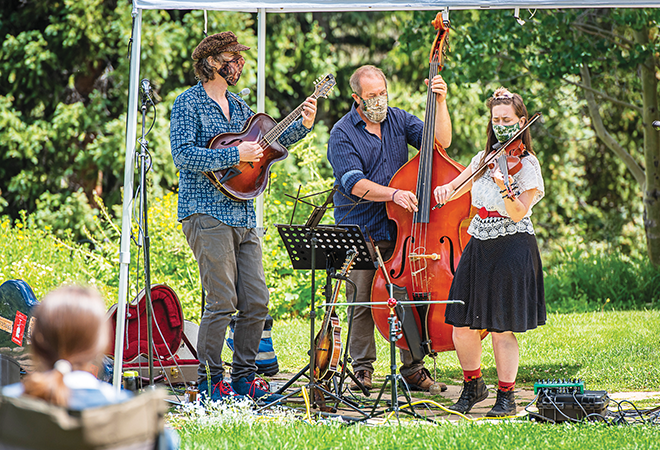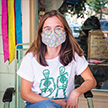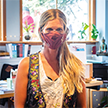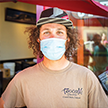COVID course detours some into the pain cave
by Than Acuff
There’s no question the new course tacked on a bit more for some, and a lot more for others, at the 2020 North Face Grand Traverse Mountain Run and Bike Saturday and Sunday, September 5-6. Cam Smith and Jenny Smith managed to defend the home trails in the men’s run and women’s mountain bike races, respectively, with Billy Laird winning the Dual Sport title, running one day and biking the next. But a host of out-of-towners took titles in the women’s run, men’s bike and women’s Dual Sport races.
On paper, the new course for the 2020 North Face Grand Traverse Mountain Run and Bike was longer with more vertical gain so it was a relative unknown how it would play out when the rubber hit the trail.
Before the onset of COVID, the mountain run race always started in Crested Butte and finished in Aspen and the mountain bike race started in Aspen the next day and returned to Crested Butte and both races came in around 41 miles.
But COVID protocols in Pitkin County, where Aspen sits, prevented the race from getting over the Elk Mountains to Glitter Gulch and race organizers came up with a new course, all within Gunnison County. The new course upped the ante significantly for athletes, coming in around 48 miles long with between 7,800 and 8,500 feet of vertical gain.
Athletes and organizers got a sense for the enormity of the course, and the effect of the daytime heat, on Saturday as 193 runners headed out in waves at 5:50 a.m. with 160 finishing, the last runner crossing the finish around 8:30 p.m.
Cam won with a time of seven hours and three minutes, noticeably drained by the effort as he ran into issues three hours into his seven-hour tour.
“I had a tough day,” says Cam. “I started having foot and knee pain and started getting blisters two to three hours into the race. I thought I’d work my way through it but it just got worse and worse.”
Cam kept on moving though, all alone out front with no idea where the closest competitor was or what his time was compared to other runners.
“I don’t know what possessed me to keep going. I just know I hate quitting things,” says Cam. “I knew I was ahead but didn’t know how far ahead. I just knew I didn’t want to get to the finish line to learn I had lost by a second.”
The effort paid off as it turned out, when Nick Coury crossed a couple of minutes later but times showed he was just two seconds shy of Cam in the end.
“I was having a bad day but you just got to work your way through it,” says Cam.
The women’s side was far less contested as Nicole Mericle, 2018 Spartan Race World Champion in her first ultra marathon, won the women’s race by a margin of 38 minutes and fast enough to finish in fifth place among all racers, men and women.
Sunday morning 119 mountain bikers lined up in Crested Butte to follow the course in the opposite direction connecting Brush Creek to Cement Creek only to come back over to Brush Creek via Star Pass, eventually turning onto Upper Upper Loop to finish in Mt. Crested Butte.
Thanks to a grant from the Mt. Crested Butte admissions tax there was $5,700 in prize money on the line and the payout for both men and women was six deep, bringing in some heavy hitters from both in and out of the valley.
Case in point, Russell Finsterwald out of Colorado Springs, Colo. Finsterwald is a five-time national champion in a variety of disciplines, most notably on his bike. Finsterwald took the men’s bike title, finishing the course in a time of four hours and 10 minutes and 10 minutes ahead of second place. The next four finishers all came to the race with impressive bike racing resumes. Brian Smith was the lone local man to finish in the money, placing sixth.
Yet, among the 95 men who did finish, with the last rider crossing nine hours and 17 minutes later and showered in Champagne by his friends, there was also 14-year-old Andrew Morris from Ft. Collins. Morris raced with his father to end up in 28th place, posting a remarkable time of 5 hours and 50 minutes.
Ultimately, it was up to the local women to bring a strong showing to the bike race, with three finishing in the money. They were led by Jenny Smith, who brought home the title, her third Grand Traverse bike title, with a relatively pain-free time of five hours and 30 minutes.
“I had never done a race in the Cement Creek area and I had never done the Waterfall Cutoff before so that was super cool,” says Jenny.
She admits that the climb up Crystal Peak trail was arduous but earlier in the summer she had taken some u19 DEVO bike girls that way on an adventure ride so she couldn’t crack there.
“I figured I had 14-year-old girls on that trail and they didn’t complain, so I couldn’t,” says Jenny.
About her only concern was mechanical as the creek crossings added some stress to her bike.
“I was scared that my chain would break,” says Jenny.
In the end, Jenny was appreciative of the COVID course.
“I thought the course was awesome and I liked the fact that it included the trails in Crested Butte South area,” says Jenny. “It’s a ton of climbing to put in a 50-mile race. Massive kudos to Andrew [Arell] for his perseverance to help move the race along.”
Jari Hiatt was the next local in third place and Emma Vosburg mashed her way to a payday, placing sixth.
“All things considered it was a successful weekend, even dodged the smoke,” says Crested Butte Nordic events director Andrew Arell. “But we will return to the original course as soon as we can. The Grand Traverse is intrinsically an event linking the two mountain communities.”
 The Crested Butte News Serving the Gunnison Valley since 1999
The Crested Butte News Serving the Gunnison Valley since 1999

